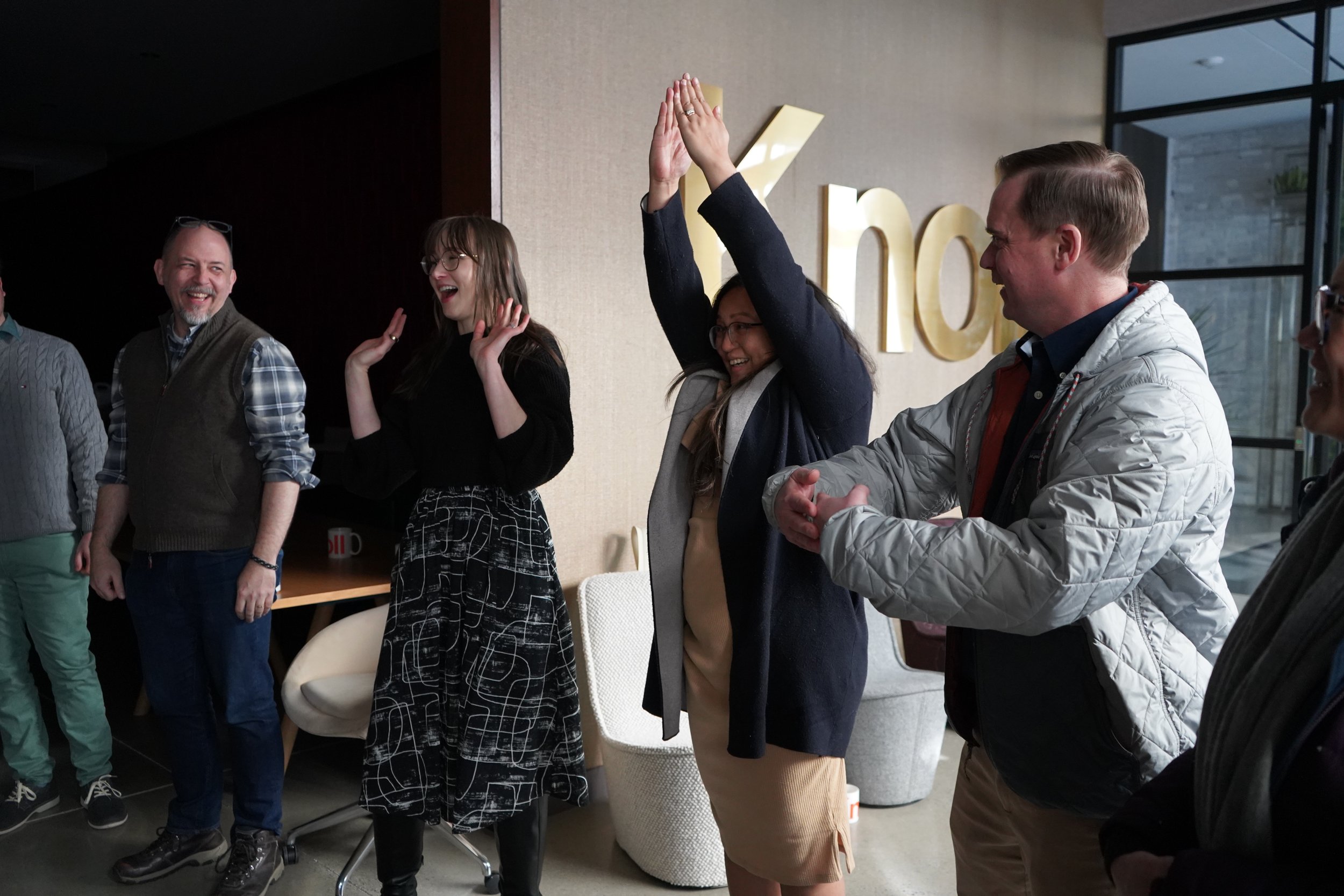S1: Leading Together
February 21, 2025
Location: Miller Knoll Showroom
Led by: Michelle Bennett and Caitlin Coats
As a foundation to the CKLDP, the first session highlighted the importance of leadership. The scholars learned about how the current architecture profession needs leaders with Emotional Intelligence, who can build up others around them. The session facilitated the group getting to know each other, and the speakers presented different ways that leaders can connect to others. By learning about themselves and about the other leaders alongside them, the scholars gained new skills to help the teams they work with every day.
Act 1: You Can Make a Difference
Patrick Malone
In the first presentation, Patrick Malone discussed the importance of human connection in leadership, and how emotional intelligence can distinguish great leaders. The presentation reviewed several examples of how many actions are based on fixed pathways in our brains, developed by our regular behaviors. These included a researcher who learned to ride a bike that steered backwards, challenging their instincts learned through years of bike riding. The scholars also went through the experiment of drawing in a mirror, experiencing how these learned processes can be updated, but how much practice it takes to relearn familiar behaviors. By understanding these neural pathways and reactions in the brain, we can understand behavior and work better with others. We all have the capacity to change ourselves and the organizations around us if we can leverage and further develop emotional intelligence.
Elizabeth Cutler
During the second session, Elizabeth Cutler brought more connections to the group with an Improv workshop. As well as getting the group moving and laughing together, the exercise helped the team build the 4 Cs of Improv: Creativity, Clarity, Collaboration, and Confidence. Generating new ideas, considering different forms of communication, building teamwork, and engaging with the unknown, are all skills that leaders need to practice in a professional setting. When people start to drop their guard, even passing an imaginary ball can help to build connections.
Act 2: Improv for Building Creative Connections
Cable Clarke has experience enabling change in some of the largest companies and organizations in the world. This presentation highlighted leadership traits and emphasized how they are related to team building and creating opportunities for yourself and others. This session analyzed several organizations, their workplace cultures, and how those cultures are influenced by the organization’s leaders. These case studies taught the scholars how leadership can impact the culture of an organization. The team also reviewed their recently completed Life Styles Inventory assessments. These assessments evaluated twelve different qualities and how they trend towards different leadership styles. Additionally, the inventory provided suggestions on how the participants could approach their LSI profile to adjust their leadership style and work to be a more constructive leader.








